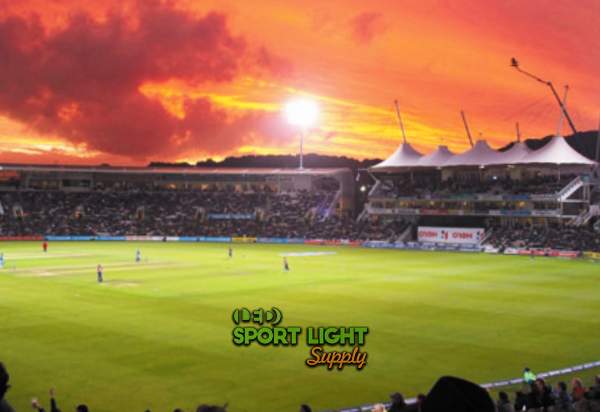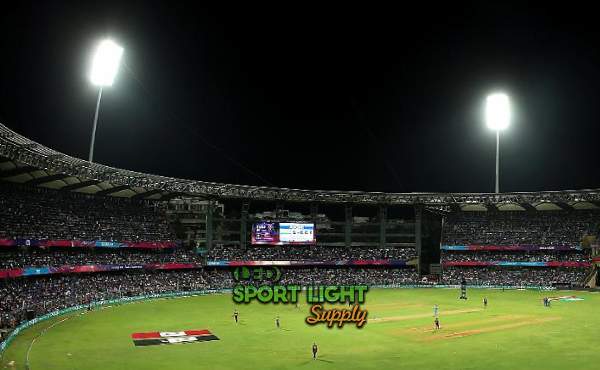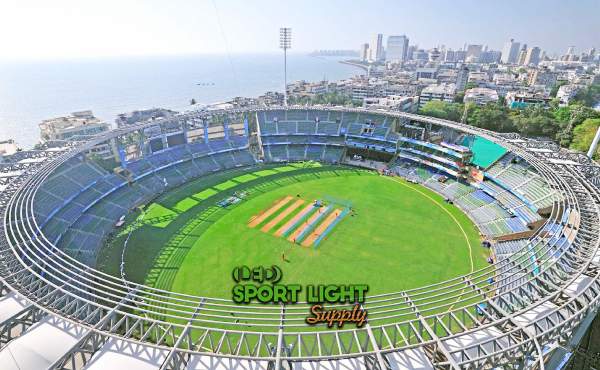Traditionally, cricket field lighting relied on high-energy, grid-dependent sources, but technological advancements have introduced an efficient and sustainable alternative. By integrating LED lights with solar energy, cricket fields can maintain high-quality lighting while significantly reducing energy consumption and operational costs. This setup enhances game quality, ensures player safety, and promotes environmental responsibility, aligning with global initiatives to reduce carbon emissions. The following sections explore the benefits, requirements, and maintenance considerations for implementing a solar-powered LED lighting system on a cricket field.
Table of Contents
Toggle Compared to traditional lighting options, LED lighting provides substantial energy savings. Traditional lighting systems, often relying on halogen or fluorescent bulbs, consume large amounts of electricity. LEDs, however, are engineered to produce high levels of brightness with much lower power consumption. This makes them particularly advantageous for large-scale settings like cricket fields, where extensive illumination is required for clear visibility during evening matches and late practices. By using LEDs, cricket fields can maintain robust lighting without the burden of excessive energy costs.
Compared to traditional lighting options, LED lighting provides substantial energy savings. Traditional lighting systems, often relying on halogen or fluorescent bulbs, consume large amounts of electricity. LEDs, however, are engineered to produce high levels of brightness with much lower power consumption. This makes them particularly advantageous for large-scale settings like cricket fields, where extensive illumination is required for clear visibility during evening matches and late practices. By using LEDs, cricket fields can maintain robust lighting without the burden of excessive energy costs.
When coupled with solar power, the energy-saving potential of LED lighting is amplified. Solar-powered systems harness sunlight throughout the day, storing energy to power LED lights after dark. This setup is highly advantageous in locations with ample sunlight, as it minimizes reliance on grid power. For cricket fields, the synergy between solar panels and LED lights ensures that illumination remains strong and uninterrupted during games and practices, even during peak nighttime hours. By optimizing the energy captured during the day, these systems support continuous lighting and reduce the strain on traditional power sources.
The combination of solar power and LED technology significantly reduces the overall energy consumption associated with lighting cricket fields. This efficient use of energy translates into both environmental and economic benefits. With lower power consumption, facilities can allocate resources to other operational needs, all while minimizing their ecological impact. Moreover, by embracing energy-efficient technology, cricket fields contribute to sustainable sports infrastructure, setting an example for environmentally conscious facility management.
 LED lights provide an exceptional level of brightness, essential for maintaining high visibility across the entire field. This brightness level ensures that players, referees, and spectators can track the cricket ball and player movements clearly, which is especially beneficial during evening matches. High-quality illumination plays a role in upholding the integrity of the game, as players can react quickly and efficiently to the ball’s trajectory. LED lighting enhances clarity and contrast, which is particularly useful in cricket, where quick reflexes and precise timing are paramount.
LED lights provide an exceptional level of brightness, essential for maintaining high visibility across the entire field. This brightness level ensures that players, referees, and spectators can track the cricket ball and player movements clearly, which is especially beneficial during evening matches. High-quality illumination plays a role in upholding the integrity of the game, as players can react quickly and efficiently to the ball’s trajectory. LED lighting enhances clarity and contrast, which is particularly useful in cricket, where quick reflexes and precise timing are paramount.
Uniform lighting is a critical factor in sports lighting, and LEDs excel in providing consistent illumination. Unlike some traditional lighting sources that may leave areas dim or unevenly lit, LEDs distribute light evenly across the field, helping eliminate dark spots and shadows. This uniformity is valuable for both performance and safety, as it ensures that players have consistent visibility no matter where they are on the field. When light levels are balanced, there is less strain on players’ eyes, which helps reduce fatigue and maintains peak performance levels. For referees, uniform lighting ensures accurate judgment calls, further supporting fair play.
Inconsistent lighting can pose significant safety risks on the cricket field. Shadows or dimly lit areas may lead to missteps or misjudged plays, increasing the likelihood of injury. LED lighting systems, with their capacity for broad and even coverage, reduce these risks by ensuring all areas of the field are well-lit. This consistency promotes safe movement and gameplay, supporting the physical well-being of athletes and enhancing the overall experience for all involved.
 Solar energy is an inherently renewable resource, producing no emissions or pollutants during power generation. By choosing solar power over fossil-fuel-dependent grid electricity, cricket fields can drastically reduce their carbon footprint. Solar panels capture sunlight and convert it into usable energy without the harmful byproducts associated with traditional energy sources. For cricket field operators, this switch not only aligns with environmental goals but also positions the field as a sustainable venue within the community.
Solar energy is an inherently renewable resource, producing no emissions or pollutants during power generation. By choosing solar power over fossil-fuel-dependent grid electricity, cricket fields can drastically reduce their carbon footprint. Solar panels capture sunlight and convert it into usable energy without the harmful byproducts associated with traditional energy sources. For cricket field operators, this switch not only aligns with environmental goals but also positions the field as a sustainable venue within the community.
The partnership of solar energy with energy-efficient LED lighting results in lower greenhouse gas emissions. As LEDs consume far less power than traditional lighting, the overall demand for electricity decreases, minimizing the need for grid-based power that often comes from fossil fuels. Consequently, cricket fields adopting solar-powered LEDs are playing a role in reducing greenhouse gases. This environmentally responsible choice aligns with broader efforts to mitigate climate change and helps the field attain a reputation for responsible environmental practices.
In the context of sports facilities, sustainable management practices are becoming increasingly valued. By opting for a solar-powered LED system, cricket field operators demonstrate a commitment to sustainable energy practices. This choice not only benefits the environment but can also serve as a model for other sports facilities looking to adopt greener technologies. Sustainable facility management fosters a positive public image and resonates with environmentally conscious sports fans and community members.
The initial costs for implementing a solar-powered LED system may be higher compared to traditional lighting solutions. This includes purchasing and installing solar panels, LED fixtures, and other necessary infrastructure. However, while upfront investment can be a consideration, the long-term financial benefits outweigh these initial expenses. Solar and LED technologies have become more affordable in recent years, making them an increasingly viable option for large-scale use in sports facilities.
One of the key financial advantages of solar and LED technology is the reduction in ongoing operational costs. Solar panels generate free electricity after installation, which drastically cuts down energy expenses. LEDs, known for their longevity and durability, require less frequent replacement and fewer repairs compared to traditional bulbs. For cricket fields, this translates to substantial cost savings over time. With minimal maintenance needs and low energy costs, the return on investment in solar-powered LED systems becomes increasingly evident.
The cumulative effect of reduced energy and maintenance costs leads to significant financial savings over the lifespan of the lighting system. For cricket field operators, these savings can be reinvested into other areas, such as facility improvements or community programs. In addition, lower operational costs allow facilities to be more financially sustainable in the long run, which is advantageous in an increasingly competitive sports industry.
The effectiveness of solar-powered lighting largely depends on how efficiently the solar panels capture sunlight. To achieve this, careful consideration must be given to the placement and orientation of the panels. Ideally, panels should be installed in locations that receive the most sunlight throughout the day, ensuring maximum energy capture. Rooftops, elevated stands, or specially designed mounts are common locations for solar panel installations on cricket fields, as they provide unobstructed access to sunlight.
The angle and orientation of solar panels play a significant role in optimizing energy capture. By positioning the panels at an angle that maximizes sunlight absorption, operators can ensure the system generates sufficient power to meet the lighting needs of the cricket field. Solar installers typically calculate the optimal tilt and orientation based on the geographic location of the field, seasonal sunlight patterns, and the field’s daily energy demands. Correct panel positioning maximizes energy efficiency and reduces the need for supplementary grid power.
To maintain optimal sunlight exposure, panels must be free from obstructions like tall structures, trees, or stadium equipment that may cast shadows. Even a small amount of shading can significantly reduce energy output, impacting the performance of the entire lighting system. Cricket field operators should conduct a thorough site assessment before installation to identify and mitigate any potential obstructions. By ensuring a clear and unobstructed path to sunlight, operators enhance the reliability of the solar-powered LED system.
The placement of LED fixtures is crucial to achieving balanced lighting across the cricket field. Fixtures must be installed at strategic points around the perimeter, ensuring uniform illumination for players and spectators. Positioning LED fixtures at carefully calculated heights helps distribute light evenly, minimizing shadows and preventing glare. Proper planning and placement allow the lighting to cover the entire playing area effectively, supporting a high-quality visual experience for everyone on the field.
The height of the poles on which LED fixtures are mounted affects light distribution and intensity. Taller poles may be used to provide broader light coverage, while shorter poles can deliver more focused lighting. The ideal pole height and fixture angle depend on the field size and the specific lighting needs of the facility. By fine-tuning these variables, field operators can ensure that lighting remains consistent and comfortable for players and officials.
Outdoor LED fixtures are exposed to various weather conditions, from rain and wind to extreme temperatures. To maintain reliability, the fixtures selected for cricket fields should be weather-resistant and made of durable materials that can withstand outdoor conditions. Many LED fixtures are designed with protective casings that shield sensitive components from moisture, dust, and impact. Choosing weather-resistant fixtures extends the lifespan of the lighting system, ensuring consistent performance throughout the sports season.
While solar-powered LED systems require less maintenance than traditional lighting setups, periodic inspections are necessary to maintain optimal performance. Solar panels should be checked regularly to ensure they remain clean and unobstructed. Dirt, dust, or debris can accumulate on the panels, reducing their energy-capturing efficiency. By scheduling routine cleaning and inspection, operators can ensure the panels continue to produce adequate power for the lighting system.
LED fixtures, while low-maintenance, still benefit from periodic inspections to verify their operational status. Over time, exposure to the elements or minor mechanical wear can affect their performance. Routine checks allow operators to identify any issues, such as dimming or flickering lights, that may impact field illumination. Additionally, inspecting the integrity of weatherproofing components ensures the fixtures remain resistant to moisture and temperature fluctuations. Regular maintenance preserves the high-quality lighting that LED systems provide and helps prevent potential disruptions during games or practices.
Although LED and solar technologies are known for their durability, they are not entirely immune to wear and tear. Components like wiring, connectors, and mounts may require occasional tightening or replacement over the years. Addressing small issues early prevents them from escalating into costly repairs. By proactively maintaining both the solar panels and LED fixtures, cricket field operators can extend the lifespan of the system, maximizing the return on their initial investment.
Preventive maintenance is a key factor in ensuring that solar-powered LED systems continue to perform at peak levels. Scheduling periodic maintenance checks and inspections allows operators to address minor issues before they impact lighting quality or system reliability. By keeping the system in optimal condition, cricket field operators can deliver consistent and reliable lighting for players, officials, and spectators, ensuring the facility is always prepared for use.
The integration of solar-powered LED lighting on cricket fields represents a step forward in both efficiency and sustainability. By combining the energy savings of LEDs with the renewable power of solar panels, cricket fields can maintain high-quality lighting while reducing energy costs and environmental impact. These systems offer multiple benefits, including brighter and more uniform illumination, reduced carbon footprint, and significant long-term cost savings. With careful planning in panel placement, fixture installation, and maintenance, cricket fields can enjoy reliable, eco-friendly lighting for years to come. This approach supports both the sustainability goals of the sports industry and the operational efficiency of sports facilities, setting a strong example for future developments in sports infrastructure.
Drop us a line to receive a free lighting design